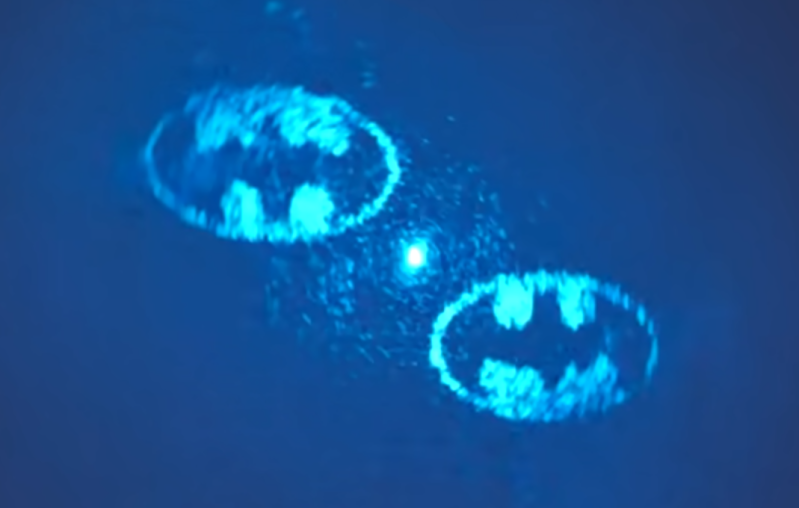[The Thought Emporium] has been fascinated by holograms for a long time, and in all sorts of different ways. His ultimate goal right now is to work up to creating holograms using chocolate, but along the way he’s found another interesting way to manipulate light. Using specialized diffraction gratings, a laser, and a few lines of code, he explores a unique way of projecting hologram-like images on his path to the chocolate hologram.
There’s a lot of background that [The Thought Emporium] has to go through before explaining how this project actually works. Briefly, this is a type of “transmission hologram” that doesn’t use a physical object as a model. Instead, it uses diffraction gratings, which are materials which are shaped to light apart in specific ways. After some discussion he demonstrates creating diffraction gratings using film. Certain diffraction patterns, including blocking all of the light source, can actually be used as a lens as the light bends around the blockage into the center of the shadow where there can be focal points. From there, a special diffraction lens can be built.
The diffraction lens can be shaped into any pattern with a small amount of computer code to compute the diffraction pattern for a given image. Then it’s transferred to film and when a laser is pointed at it, the image appears on the projected surface. Diffraction gratings like these have a number of other uses as well; the video also shows a specific pattern being used to focus a telescope for astrophotography, and a few others in the past have used them to create the illusive holographic chocolate that [The Thought Emporium] is working towards.















This is really cool.
I first learned about diffraction in 1962 in my Light and Theoretical Optics course lab. As I recall we filtered and collimated light from a sodium vapor source (no lasers then) and shined it on ball bearing supported by a small pin and then moved a camera back and forth on the optical bench until, WOW, a point of light appeared in the center of the silhouette of the ball bearing. Best ever physics lab.
Veritasium has a nice video on this
https://m.youtube.com/watch?v=y9c8oZ49pFc
Light is weird stuff, and this is a quite amazing video.
In my own humble experiments I have interest in reproducing something like https://hackaday.com/2023/03/16/laser-and-webcam-team-up-for-micron-resolution-flatness-measurements/ but with a stationary laser pointer to enhance resolution.
To keep costs manageable, I bought a few cheap laser pointers, and when pointing them at a wall (about 10m distance) it projects a big fingerprint around the laser dot. So I guess I’ll have to disassemble the thing, clean the lenses and hope I can re-assemble it again properly. If anyone has a good Idea of how to obtain affordable (<EUR 30) lasers which produce a small uniform dot please let me know. Maybe those aliexpress lasers for gun sights produce better quality dots.